After experiencing numbness in her hands in summer 2018, Lydia Carfrae-Brohaska was suspected to have multiple sclerosis, a condition which also affects her mum. However, scans revealed a glioblastoma – one of the most aggressive types of brain tumour – to be the cause. Thirty-five-year-old Lydia (known as Lyd), who lost movement on one side and relied on a wheelchair, then underwent vigorous treatment for her incurable brain cancer.
Here’s Lyd’s story, as told by her sister, Carrie…
My sister Lyd and I grew up in Wakefield in (God’s own county!) Yorkshire. Like most kids, we squabbled when we were little but we grew up to become extremely close and the best of friends. Lydia met her husband, Stu, a project engineer, 10 years ago. Stu is Australian and they met in Abu Dhabi, where they were both working at the time. Lydia was on a training placement there to become a qualified solicitor. In 2014 their jobs took them to Texas, USA, where they lived with their beloved dog Pompey.
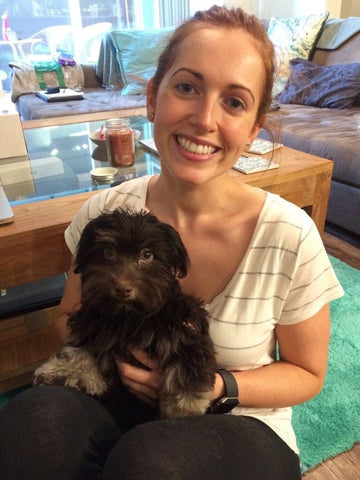
Lyd first realised there was something wrong in August 2018, when she’d just returned from a wonderful holiday in Mexico with a couple of very good friends. She was experiencing pins and needles in her fingers and toes. Doctors suspected it could be carpal tunnel syndrome or even multiple sclerosis (MS), a condition which affects our mum. When the numbness and tingling spread to her face, Lyd was urgently referred to a neurologist for an MRI scan. By now she was becoming increasingly weak in her left side. Added to this was the fact that she was still recovering from foot surgery she’d undergone earlier in the year and her mobility had become pretty limited. She was using an office chair to wheel herself from the car in the parking garage to her apartment.

The MRI scan results showed lesions on the brain, which doctors said could be a possible sign of MS. Never once did we suspect it could be a brain tumour.
The neurologist said that the only way to know what they were dealing with, was to perform a biopsy, which in itself carried some frightening risks such as total paralysis, due to the location of the tumour in her right thalamus (which is why it was affecting the left side of her body). They decided to get a second opinion at Houston Methodist Hospital. They spoke to the lead neurosurgeon there, who basically said the same thing, but made it sound less scary. I travelled to the States to be with Lyd for the operation, which took place on 3 October. Having Stu and her big sis there for her really helped to buoy her up but nothing could prepare her and her loved ones for the news that was to come next.
The biopsy revealed an aggressive, grade 4 glioblastoma. A quick google of ‘GBM’ was enough to leave us all terrified.
It might sound strange but Stu and I joined Lyd at her bedside and we were just laughing and joking around. The anaesthetic and steroids were still having an effect and she appeared to be ‘out of it’. Her surgeon came in and asked how she felt. She told him her head was a little sore. He quipped: “Well I did just drill a hole in your head!” By the time we got the official diagnosis, we were pretty sure of what we were dealing with, and what that might entail, but we had no idea how much life would change for Lyd.
She said we would get through this by laughing. We’re the kind of family that laughs at everything. Having a dark sense of humour gets you through the tough times.
I had to ring Mum and Dad to break the news of Lyd’s diagnosis and the devastating prognosis of 12-18 months. Obviously, they were distraught, but we all tried to remain positive and focus on the good times we continued to enjoy together.
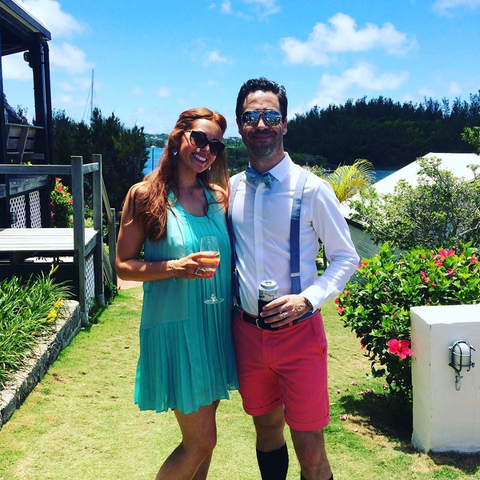
Lyd had already stopped working by that point; the doctor advised it and it had become really difficult because of the constant appointments. Also, her left hand was no longer functional; she could only type one-handed – not ideal for an executive assistant! Given the diagnosis, Stu and Lyd felt that they should move from Austin to Houston. They had lived in Houston for three years before moving to Austin, when Stu's office relocated. Houston is a world-renowned centre for medical excellence. We all knew that Lyd wasn't a huge fan of Houston and much preferred living in cool, music-loving Austin. However, they wasted no time in arranging the relocation. It’s about a three-hour drive between the two cities, usually involving heavy traffic, so commuting to and from appointments wasn’t feasible.
As Lyd’s sister, I was still finding it hard to process her diagnosis. She was a fit, healthy, slim young woman in the prime of her life. She and Stu had started trying for a family.
Sadly, because of the seriousness of her illness, there was no time to freeze her eggs before she began an intense course of radiotherapy. The radiation made her very fatigued and her beautiful red hair began to fall out. Everything she did seemed to take so much effort and by the end of the day, she would be incredibly tired. She was prescribed tablets that are usually given to children with ADHD. Incredibly, they worked.

She also underwent chemotherapy, which made her very nauseous and she developed a rash all over her body. Being in America, Lyd had access to pioneering treatment not currently available on the NHS. She was fitted with a portable medical device, specifically used to treat glioblastoma. When the device is turned on, it creates low-intensity, wave-like electric fields called TT Fields, which target the tumour. It’s found to increase life expectancy by 20%, so Lyd jumped at the chance to have this treatment, in spite of the fact it meant shaving her head and having to wear the device for up to 18 hours a day.
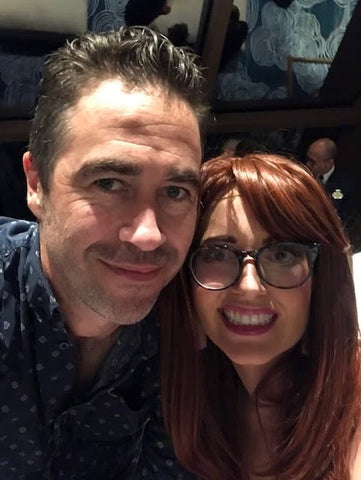
Losing her hair was traumatic. At first, it only fell out in specific spots where the radiation was targeting, but gradually more and more came out every time she washed it. Anybody who knew Lyd pre-cancer, knew her hair was a big part of her identity; from being affectionately teased by friends; “ginner”, “ginge” etc. to attracting male attention because of its vibrant, red colour. People would always mention her hair. Mum called it her “crowning glory”, which was lovely, but it made it all the more difficult when she lost it. She decided to have fun with it by ordering lots of wigs and experimenting with lots of new styles and colours. Her favourite wig was the one that most closely resembled her own beautiful hair.
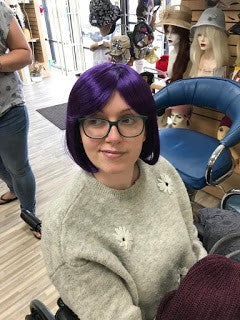
Shortly after Lyd’s diagnosis and with her backing, Stu took it upon himself to begin fundraising for Brain Tumour Research. He and his friends wanted to garner support, build a community and to do something positive in response to the tough situation they found themselves in.
They launched a ‘Team Lydia’ Facebook group, which serves not only as a support network for her friends and family, but also as a means of joining in Lyd’s fight, by donating to the charity. Through her diagnosis we learned that brain tumours are indiscriminate; they can affect anyone at any age. What’s more, they kill more children and adults under the age of 40 than any other cancer... yet just 1% of the national spend on cancer research has been allocated to this devastating disease. Brain Tumour Research is determined to change this.

The fundraising has gone from strength to strength and to date we have raised thousands for Brain Tumour Research. Last year our cousin Rosie Crawford came up with the idea of a team of us walking, running or swimming 4735 miles, the distance separating Lyd in Houston and her loved ones back home in Wakefield. Participants from all over the globe signed up, pledging a minimum of £20 to take part and then raising more money through sponsorship. Having smashed the 4735-mile target, ‘Wakefield to Houston’ still continues as a motivation and means of connection for many across the world.
In February, Lyd’s Wakefield network showed their support from across the pond with a fundraising ceilidh with top folk band, Faustus, to mark her 35th birthday. All of this culminated in the fundraising group ‘Lydia’s Wish’, which Rosie set up in August. By raising money and awareness, we are playing our part in Brain Tumour Research’s quest to find a cure. Every day of research we are able to fund is bringing them a step closer.
Lyd was so grateful and thrilled to hear about everything her friends and family were doing and it really helped to keep her spirits up through treatment.
Lyd felt very fortunate to live in Houston, where she could access treatment from some of the world’s leading experts in this type of cancer. She actually said she felt guilty that she had had the option of certain treatments that weren’t readily available to people with the same disease living in the UK. Although I missed her dearly, I was just pleased that she was in the best place possible. I visited her as often as possible. I was there in July 2019 for my birthday and was so pleased that my sister was her usual positive, funny, lovely self. We did the things we always enjoyed doing together; we went to the theatre, we got our nails done, we went to a pub quiz!
Understandably, there were times when her mood dropped. She joined a few social media groups for glioblastoma patients which were a double-edged sword; many of the people she spoke to were in a much worse state of mind and that sometimes dragged her natural positive personality down. As a young brain tumour patient, she sometimes felt isolated as many of the patients were in their 50s, 60s and older.

In Christmas 2018, Lyd was determined to come back to the UK to spend it with family and friends. It took a while for us to get the go-ahead from the doctors, but eventually they agreed and it was so amazing to have her at home for a cold, wintery British Christmas. Lyd’s mother-in-law, Michelle, joined us from Australia, which was wonderful. Lyd was eager to see my new house and our new addition, a beautiful Maine Coon called Sherlock. I also arranged a New Year’s Eve party, with lots of Lyd’s friends coming to celebrate. It was so lovely to see her enjoying herself and for one evening she could almost forget that she had cancer. So, we brought in the New Year feeling hopeful and positive. Unfortunately, this wasn’t to last long.
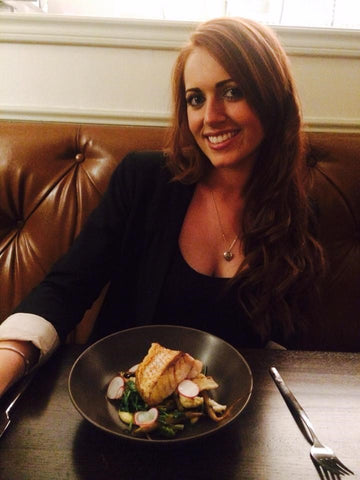
When Lyd landed back in Houston, she noticed that her leg was very sore. The next morning it hadn’t got any better, so Stu called her neuro-oncologist, who advised them to go straight to hospital. After a long night in the Emergency Room, she had a scan, which showed an extensive clot in her lower left leg. She was put on oral blood thinners and had to stay in hospital for a couple of nights. She couldn’t put weight on her leg and had to use the bedpan; as Lyd testified, cancer has no dignity. She just wanted to get home and so we were all relieved when she was finally discharged with instructions to keep taking the blood thinners for the time being.

Lydia was completely amazing. In spite of everything she went through, she was already planning to go back to work part-time and had plans to do a Masters in Art History.
She volunteered in a hospital for dementia patients one afternoon a week. She was truly incredible. She also started writing a blog, largely to help others who were going through a similar experience – no mean feat when you’re wiped out by chemo and radiotherapy. It was an incredibly challenging 12 months, some of which seems like a blur, but Lyd’s great determination, along with a positive attitude, was infectious and together we were strong and believed we could beat this.
After the scare of the blood clot, Lyd started to show improvements in 2019. Regular scans showed that the tumours (there were two now) were being hammered by the treatment – with doctors even calling her ‘a phenomenon’! The original larger tumour was now ‘a husk’ and the smaller tumour was showing similar signs of decreasing. She was determined and hardworking, and with the help of the wonderful physical therapy team at Houston Methodist Hospital, learned to regain some strength in the left side of her body. This meant that she was able to use crutches and/or a stick (we named ‘Hugo’!) instead of relying on her wheelchair.
She even managed to use an exercise bike every day – we were beyond proud! In April her doctor even said “the disease is controlled. We will now follow up with imaging only”.
Lyd and Stu went on their belated honeymoon in November and chose a luxury cruise along the Panama Canal. A cruise was a great idea for Lyd, as there were doctors on board in case anything went wrong, and the accessibility issues were all dealt with. It also avoided the need for her to fly with the threat of a blood clot – and still meant she could visit lots of wonderful countries and places. They had a truly amazing time and they both looked so happy in their holiday snaps.
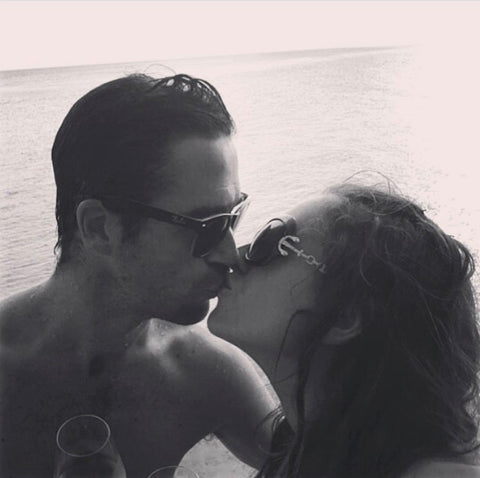
At Christmas the whole family travelled to be with Lyd and Stu to celebrate. Lyd said that she had a surprise for us all – we didn’t know what it was, even when we walked into Houston Theatre. She’d booked us all tickets to see The Nutcracker ballet! I was so overwhelmed as I’d never been to the ballet before and it was such a wonderful treat for her to plan for us.

We had a fantastic Christmas together – ate and drank plenty – and laughed so much! We were due to fly back on New Year’s Eve but unfortunately Lyd suffered an unexpected seizure which knocked us all for six.
We postponed our flights back to the UK and Lyd’s next MRI scan was brought forward to the next day. We were terrified that her tumour had started to grow back. Thankfully the scan showed that the tumours had not grown or changed – and the doctor thought that her seizure may have been caused by her treatment.
By March time, Lyd reported bouts of nausea and hiccups to her doctor. This was a new symptom and caused her doctor to become concerned. He reviewed her latest scan and inspected the brainstem. There was an ill-defined area of white signal there, suspicious for infiltrating tumour, but it had been there before. The areas where the initial tumour was were also controlled. Her doctor decided to treat the symptoms with medication and repeat her scans in a month.
Her situation was 180 degrees different a day later. It turned out that the contrast sequence, which her doctor had not reviewed, showed a tumour at the tip of the lower brainstem, an area called medulla oblongata, where some of the body’s reflex centres are like breathing, nausea, and swallowing.
Lyd’s doctor said: “despite my experience dealing with glioblastoma, it never stops playing dirty tricks.
Her medical team agreed to go ahead and gamma knife (give pinpoint radiation) the spot on her brainstem, but everything snowballed. Her symptoms worsened, she developed aspiration pneumonia from impairment of her swallowing reflex and landed in the hospital. Her doctor knew that there was no more time. With the start of the pandemic and travel restrictions, Lyd had a high chance of dying away from her home country and without her parents, her sister, and her friends.
Getting her back home on time was a priority for Stu and Lyd’s doctor – both morally and medically. Her doctor asked her: “Lydia: do you want to see your family?” She said: “YES”. Next: "Do you think your family will want to see you”? Same answer. That concluded everything. The next few days were a blur. Stu was amazing and, with the help of their friends in Houston, packed for flights back to the UK just a few days later – they even managed to bring their beloved dog with them – just before the airports were starting to close for the pandemic.
Lyd spent her final three weeks in my home in Wakefield – the city where she was born and grew up in.
We continued to fight the disease by looking at alternative supplements and even an oxygen chamber which Stu had delivered to my house. Unfortunately, Lyd grew weaker – and more and more tired each day. The NHS was fantastic and helped us out with her medication and equipment. They supplied us with very strong painkillers should Lyd ever need them but miraculously she never did. We set up a day bed in our conservatory so that she could see the garden and chat to friends through the windows. We played card games, watched TV, and talked about so many things. We were truly blessed to have this precious time together. I can honestly say that she passed peacefully. I had been terrified of watching her suffer. Instead she just fell asleep as I was giving her some water. There was no pain, no seizures – she closed her eyes and went on Friday 22 May, 2020.

Lyd was truly the best sister I could have asked for. When we were younger, we had our fair share of sisterly squabbles, some when we were a little older too, but we always forgave each other with a big hug! Our love for each other was deep and unconditional. I could never be miserable with my 'Ziz' around; we were there for each other no matter what. I would rather have had 36 years with Lyd than a whole lifetime with any other person – even though the pain of losing her is so hard to bear. She was, and will always be, my soulmate; my one love in the truest, purest sense of the word. Her presence will guide my life as a force of good and I will make her proud of me, just like I was, and always will be, immeasurably proud of her.

Lyd’s courage was astounding. We cannot imagine what it is like for someone to be told they have an incurable form of cancer at 34 years old – this was a time when she and Stu were planning for a family, for buying a house with a garden that their dog could run around in, not preparing for an unwinnable fight. But she did prepare, she did fight, she showed incredible courage; never once missing an appointment, never once giving up hope, never once saying, “I don’t want to do this anymore – it’s too hard”. Lyd achieved so much in her last two years. She kept living, travelling, meeting friends, having fun, she continued to make memories – she is and always will be an inspiration to us all.
Carrie Carfrae
February 2021
Brain tumours are indiscriminate; they can affect anyone at any age. What’s more, they kill more children and adults under the age of 40 than any other cancer... yet historically just 1% of the national spend on cancer research has been allocated to this devastating disease.
Brain Tumour Research is determined to change this.
If you have been inspired by Lydia’s tragic story, you may like to make a donation via or leave a gift in your will via www.braintumourresearch.org/legacy
Together we will find a cure.

